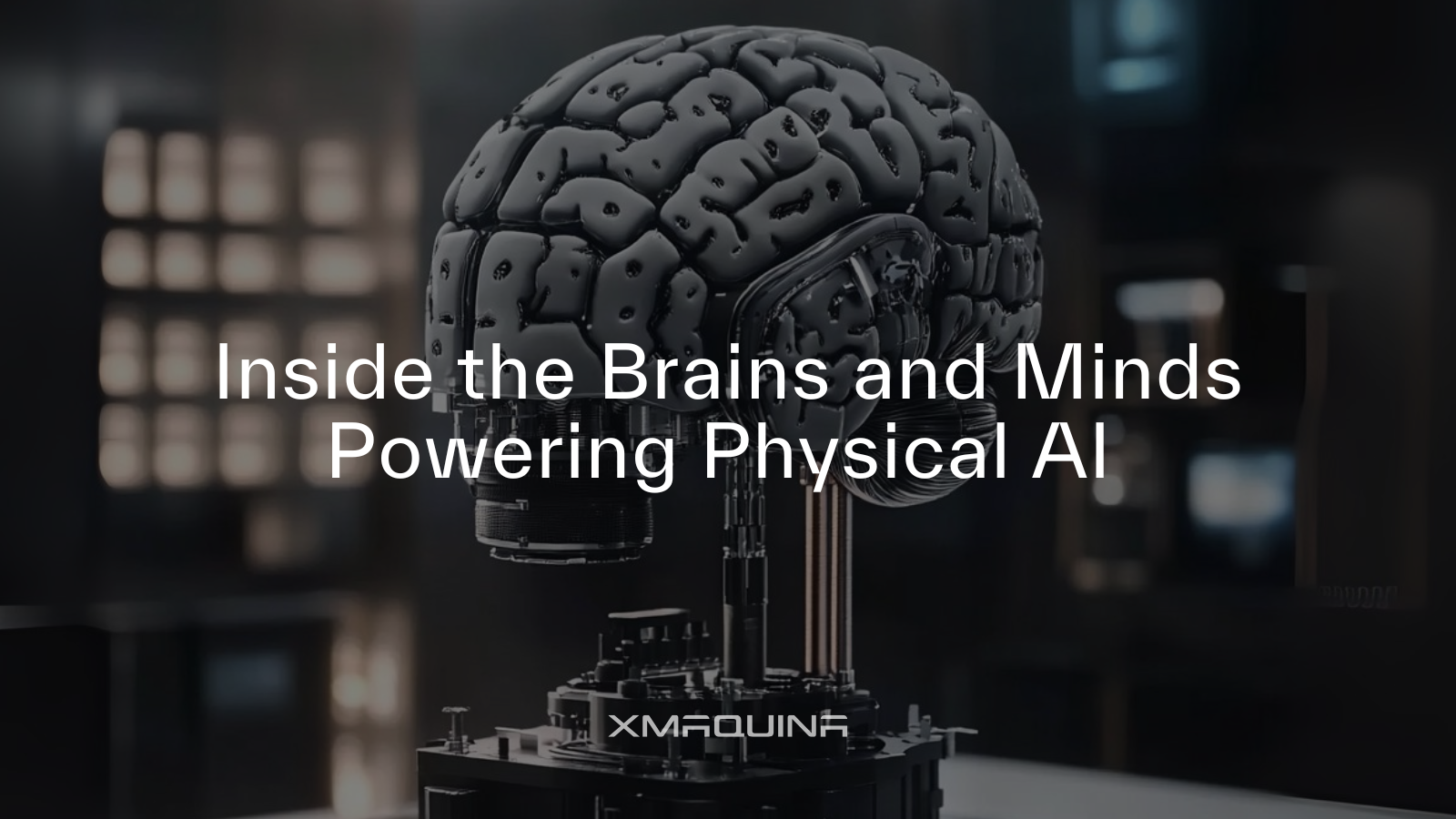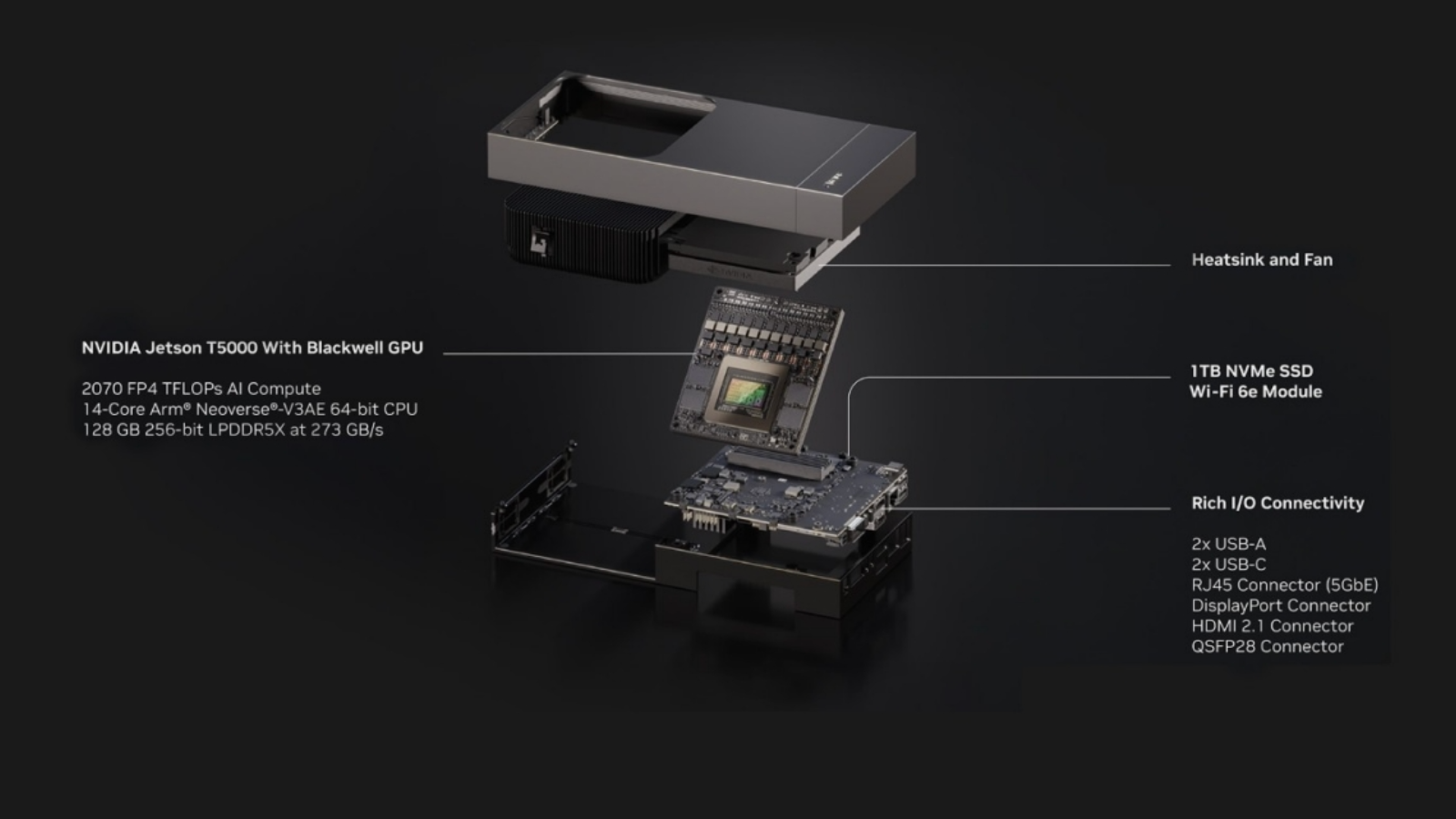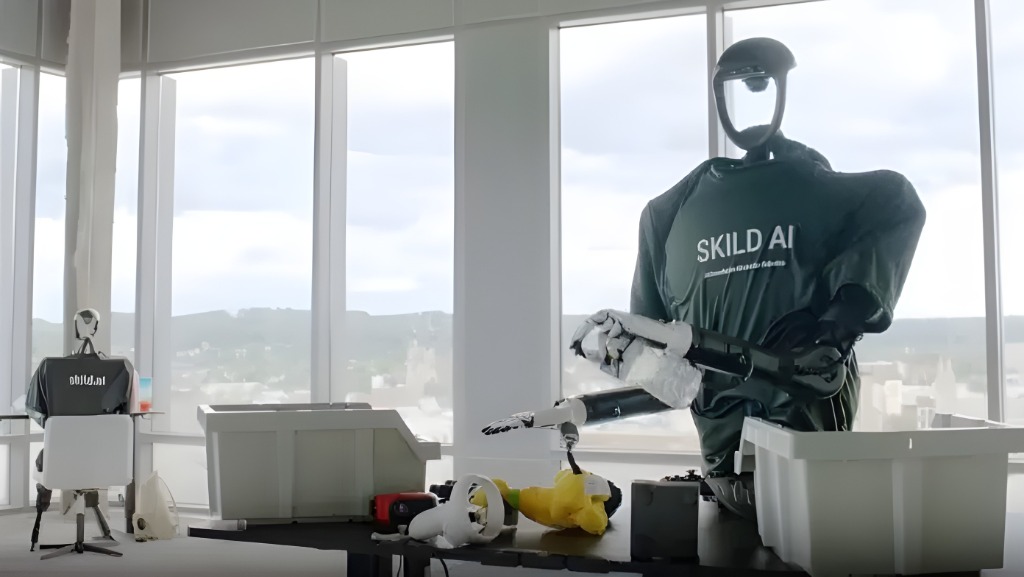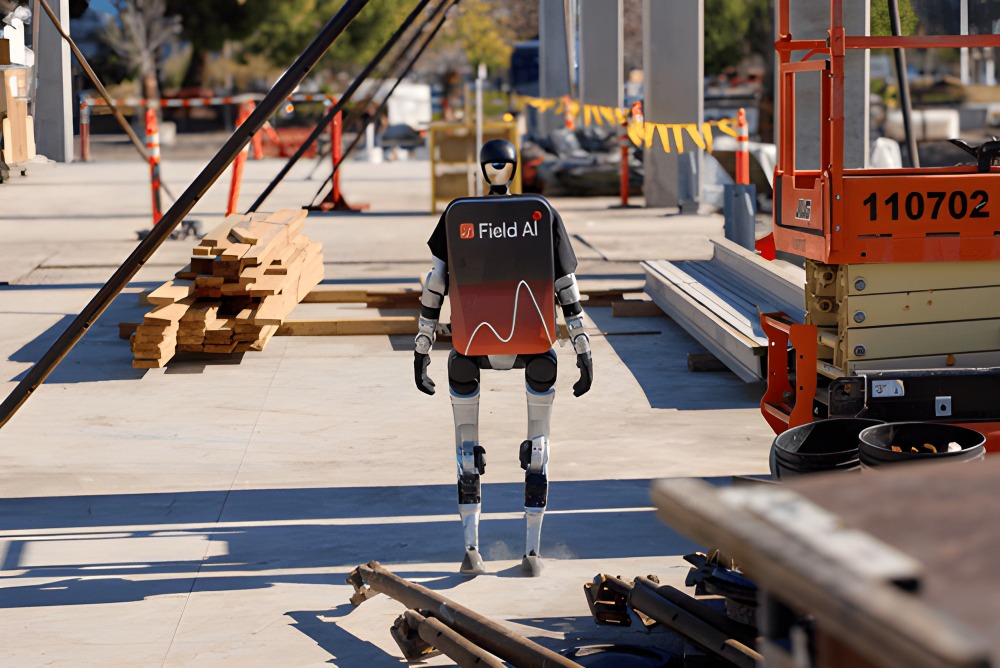
August 14, 2025
Category:
Physical AI
Read time:
8 minutes
Share This:
A follow-up to “The Next Magnificent Seven of Physical AI”
Humanoid prototypes hog the spotlight, but away from the cameras a new drama is unfolding: a handful of software-and-silicon upstarts are racing to supply the “brains and minds” every physical-AI platform will need. Think of them as the Intel, Microsoft and Android of tomorrow’s robot economy. Their stories read like pulp fiction, garage epiphanies, billion-dollar bets, and existential technical risks, yet each is on a credible path to owning a wedge of the embodied-AI stack.
The Brains of Physical AI
When we talk about a robot’s “brain,” we mean the hard-edged stuff, the on-board compute stack that takes raw sensor streams and turns them into decisions and motor commands. CPUs, GPUs or AI accelerators, memory, and real-time I/O all working in concert.
Physical AI raises the stakes. A chatbot can wait a fraction of a second for a cloud server to respond; a humanoid robot about to trip over a box cannot. Milliseconds matter. Energy efficiency matters just as much, because batteries drain fast when you are running the equivalent of a supercomputer in a human-sized body.
Right now, NVIDIA sits atop this hill with its edge AI modules, the Jetson Thor. Those are integrated systems-on-module (SoMs) with thermal design, ruggedization, and I/O tuned for robotics: multiple camera inputs, CAN bus, GPIO, low-latency Ethernet. It delivers staggering edge-AI performance: up to 2,070 FP4 TOPS, 128 GB of RAM, and more than triple the performance-per-watt of its predecessor while operating between 40 and 130 watts. And at the other end of the market, hobbyists can pick up a $249 Jetson Orin Nano Super dev kit and still get serious AI capability in a box the size of a paperback.

NVIDIA Jetson Thor is basically the gold standard right now because:
- It’s an integrated SoM (System-on-Module), not just a chip — meaning CPU, GPU, AI accelerators, I/O, and software stack are tightly packaged for robotics.
- It has mature CUDA + TensorRT + ROS 2 support, and an existing developer ecosystem.
- NVIDIA has deep robotics integrations (Isaac Sim, Omniverse) and partnerships across humanoid startups.
The question is whether anyone else can match or surpass that dominance with something faster, cheaper, and leaner.
Etched
In 2022, three Harvard drop-outs gathered in a Palo Alto garage and asked a heretical question: what if you could burn the entire transformer architecture straight into silicon? Two tape-outs later, they had an answer.
Their first 8-chip “Sohu” server pushed Llama-70B at over 500,000 tokens per second, ten times faster than an H100 box and at one-third the power draw. The demo sent shockwaves through the AI hardware scene. Venture capital followed quickly, with a $420 million growth round propelling Etched’s valuation past $2 billion.
Etched’s bet is singular and unapologetic: their chips are unbeatable for transformer workloads and useless for anything else. They are not trying to be a Swiss Army knife, more like a scalpel. Whether that is brilliance or a liability depends on how long transformers rule the AI landscape. For now, the performance is undeniable, and a pair of unnamed cloud AI giants are already running pilot racks.
Etched could technically become a competitor to NVIDIA’s Jetson Thor, but only if humanoid robotics workloads start looking a lot more like large language model inference and a lot less like the messy, multimodal, real-time sensor fusion they are today. The most likely scenario would be that a humanoid could run an Etched module alongside a Jetson-like SoM, offloading the “thinking” (LLM-based reasoning, high-level decision-making) to Etched while leaving perception, control, and planning to more general-purpose accelerators.
Hailo
When Hailo’s founders left Israel’s elite military tech units in 2017, they weren’t dreaming of the next data center superchip. Their vision was something smaller, leaner, and far more ambitious in its own way: to bring high-end AI inference to the very edge, where watts and millimeters matter as much as raw compute. From day one, Hailo’s mission has been to design chips that sip power, fit in the palm of your hand, and run advanced neural networks without a rack of cooling fans.
The result is a family of AI accelerators, first the Hailo-8, then the newer Hailo-10 that look nothing like the GPUs dominating the market. These chips use a dataflow architecture tuned for deep learning inference, moving workloads directly between specialized compute cores with local memory. By keeping data on-chip and cutting trips to DRAM, they achieve efficiency numbers that make GPU engineers jealous: up to 26 TOPS at just 2.5 watts, or 40 TOPS at under 5 watts. They won’t match NVIDIA’s Jetson Thor in absolute performance, but they don’t have to. In battery-powered robotics, every watt saved is another minute of runtime.
Hailo’s chips are already finding their way into robots, drones, and industrial cameras where vision is the main job. A humanoid robot might use them as its “eyes,” running multiple camera feeds through parallel neural networks for object detection, depth estimation, and scene understanding. Offloading this vision work from the main processor not only frees up compute for reasoning and planning, it also reduces the heat load inside the robot’s head or torso — a non-trivial concern when everything runs in a sealed chassis.
Form factor is another of Hailo’s quiet advantages. Their accelerators ship as M.2 or mini-PCIe cards that slide neatly into embedded boards, and they already support ROS 2, TensorFlow Lite, ONNX Runtime, and OpenVINO. For a robotics engineer, that means they can drop a Hailo module into an existing design without reinventing the whole software stack. In a field where development cycles are long and integration headaches can kill momentum, that is a serious selling point.
Hailo’s roadmap points toward scaling up without abandoning its power-first philosophy. If they can merge multiple AI cores with a low-power CPU and the right sensor interfaces into a single robotics-ready SoM, they could offer a true “Thor-lite” for cost-sensitive or lightweight humanoids. They might never be the all-in-one brain of a top-tier biped, but as the specialist that keeps a robot’s eyes sharp while conserving battery for movement and high-level thinking, Hailo is already proving it can play a vital role in the emerging anatomy of physical AI.
The Minds of Physical AI
If the brain is silicon and circuits, the “mind” is the software stack that brings it to life, the perception modules, world-model builders, planners, and control loops that turn pixels and torque readings into purposeful action.
It is the mind that lets a robot adapt to a new environment, solve a problem it has never seen before, and learn from experience. Here, the competition is just as fierce, and the stakes just as high.
Physical Intelligence (π)
Physical Intelligence was born not in a boardroom but in a Mission-District hacker house. Its founders, a mix of Google and DeepMind veterans and top robotics academics, shared a conviction: the brain of every future robot should be open-source.
Their first system, π-0, could take a natural-language prompt and tidy a kitchen it had never seen. The successor, π-0.5, went further, adapting instantly to brand-new homes. A $400 million Series A led by Jeff Bezos and Thrive Capital has given them the resources to feed their model a million robot-hours of diverse experience.
The approach is audacious: build a single transformer-based foundation model that learns vision-language-action mappings at massive scale, so you can “breathe intelligence” into a robot simply by connecting it. If it works, π could become the GPT of robotics, a mind that learns once and works everywhere.
Skild AI
Deepak Pathak and Abhinav Gupta left Carnegie Mellon with a shared question: could one brain inhabit any robot, from a humanoid to a quadruped, without retraining?
Skild Brain is their answer. In demos, it has piloted a Unitree H1 humanoid, a Universal Robots arm, and a custom quadruped, all powered by the same model. Behind the scenes, they have trained it on a dataset 1,000 times larger than most robotics projects, blending simulation, real-world trials, and multimodal inputs.
Investors have noticed. A $300 million Series A valued the company at $1.5 billion, and whispers in the venture circuit suggest an upcoming Softbank-led round could push it past $4 billion. The vision is clear: a shared general-purpose brain that makes robots as adaptable as people, and as easy to deploy as software.

Covariant
Pieter Abbeel, Peter Chen, and Rocky Duan set out to prove that general-purpose robot learning could work in the messiness of the real world.
Covariant’s “Brain” now controls fleets of industrial robots in warehouses, teaching them to pick, sort, and kit with human-level reliability. Its latest leap, RFM-1, blends multimodal data, text, images, video, and sensor streams, into a foundation model that gives robots human-like reasoning about their surroundings.
Every robot on the network learns from the others, pooling billions of grasp attempts into a collective skill set. That “fleet learning” makes each new deployment smarter from day one and positions Covariant as a proof point that adaptive AI can scale commercially right now.
OpenAI
OpenAI has never built a humanoid robot, but its fingerprints are already all over the space. In the same way its large language models reshaped software, the company’s next act could be in shaping the “minds” of embodied machines. Sam Altman’s team has made it clear they see physical AI as a natural frontier , and rather than reinvent hardware, they are embedding themselves into the companies building it.
One of their most direct ties is to 1X Technologies, the Norwegian humanoid maker behind the EVE and NEO robots. OpenAI’s Startup Fund was an early investor, and 1X has been vocal about using large language models as a core part of its control and interaction stack. The idea is straightforward: if a robot can understand and respond to natural language with GPT-level fluency, it becomes far easier for humans to instruct it, whether in a warehouse or a living room.

There are other, quieter connections. Sanctuary AI, the Canadian full-stack humanoid builder, has drawn from OpenAI’s research ecosystem for its cognitive architecture. While Sanctuary’s “Carbon” brain is its own design, the integration of large language model reasoning and multimodal perception is aligned with the kinds of capabilities GPT-5 promises: multimodal tool use, grounded reasoning, and conversational guidance for complex tasks.
OpenAI’s strategy is not just about funding. By positioning its models as the de-facto API for high-level reasoning, planning, and communication, it is quietly creating a dependency: if you want your humanoid to talk, plan, and think in ways that feel human, plugging into OpenAI’s platform becomes the path of least resistance.
Recently, OpenAI has gone a step further by creating an internal humanoid robotics division. Still largely under the radar, this group’s mandate is to explore how GPT-powered reasoning, perception, and planning can be tightly coupled with embodied control systems. It marks a subtle but important shift: rather than only supplying brains to outside partners, OpenAI now appears to be prototyping its own integrated stacks for humanoid platforms. Whether these efforts lead to in-house robots or remain reference designs for partners, they signal that the company intends to be more than a distant AI vendor , it wants a direct hand in shaping how its intelligence inhabits physical form.
Sanctuary AI
In Vancouver, a crowd at Hannover Messe watched the sixth-generation Phoenix humanoid quietly assemble a gearbox, a demo that hinted at far more than mechanics. Inside, Phoenix runs Carbon, a cognitive architecture modeled after human sensory and memory systems.
Sanctuary has been at this for years, iterating through seven generations of prototypes. Early trials relied on teleoperation, with humans in VR rigs guiding the robot. Now, Carbon handles more tasks autonomously, from retail stocking to light manufacturing, by learning from thousands of hours of recorded human control.
With Magna International as a manufacturing partner, Microsoft Azure supporting factory pilots, and Canadian telecoms exploring 5G-enabled deployments, Sanctuary is pursuing an end-to-end strategy: build the body, build the mind, and prove both in real workplaces.
But even if the Phoenix line never reaches mass-market success, the company holds a strong fallback card. Carbon itself could be licensed to other humanoid and industrial robot makers as a general-purpose cognitive stack, and Sanctuary’s portfolio of patents, especially around its dexterous five-fingered hands, could become highly valuable to the broader robotics industry. In that scenario, Sanctuary’s impact might come less from selling robots and more from becoming a key supplier of the intelligence and mechanical designs that others build upon.
Field AI
Field AI emerged from a simple but daunting vision: to make robots useful in the wild, far from the tidy confines of a lab or factory floor. Its founders came from deep robotics backgrounds in defense, construction, and mining, united by frustration that most robots could only handle highly controlled environments.
Their answer is a software platform that equips robots to navigate and work in messy, unpredictable outdoor settings. Think infrastructure inspection along a wind-swept bridge, surveying rugged terrain for a new solar farm, or supporting disaster recovery teams in the aftermath of a hurricane.
Field AI’s models fuse real-time sensor fusion, long-range path planning, and adaptive control into a package that can run on standard edge-compute hardware. A robot running Field AI can autonomously map a new site, avoid hazards, and adjust its mission plan when conditions change. The company is working with construction firms, energy utilities, and government agencies to pilot its technology on land, sea, and air platforms.
By focusing on environments where human access is costly, slow, or dangerous, Field AI has carved out a niche that complements the broader race for general-purpose robot minds. If humanoids are built for our homes and factories, Field AI’s creations are the scouts, surveyors, and problem-solvers for the world’s open and unpredictable spaces.

Bullish on Robotics? So Are We.
XMAQUINA is a decentralized ecosystem giving members direct access to the rise of humanoid robotics and Physical AI—technologies set to reshape the global economy.
Join thousands of futurists building XMAQUINA DAO and follow us on X for the latest updates.
Owner:



.png)
.png)

